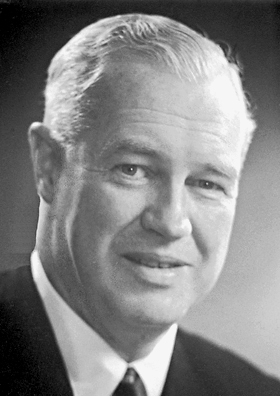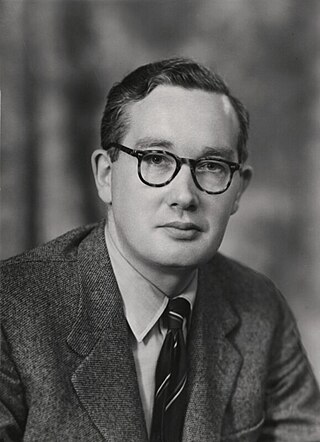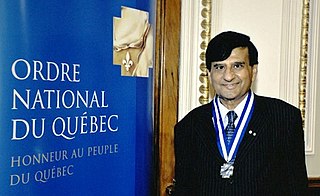Related Research Articles
GROningen MOlecular Simulation (GROMOS) is the name of a force field for molecular dynamics simulation, and a related computer software package. Both are developed at the University of Groningen, and at the Computer-Aided Chemistry Group at the Laboratory for Physical Chemistry at the Swiss Federal Institute of Technology (ETH Zurich). At Groningen, Herman Berendsen was involved in its development.

Alexander Robertus Todd, Baron Todd was a British biochemist whose research on the structure and synthesis of nucleotides, nucleosides, and nucleotide coenzymes gained him the Nobel Prize for Chemistry in 1957.

Jean Baptiste Perrin was a French physicist who, in his studies of the Brownian motion of minute particles suspended in liquids, verified Albert Einstein's explanation of this phenomenon and thereby confirmed the atomic nature of matter. For this achievement he was honoured with the Nobel Prize for Physics in 1926.

Pierre-Gilles de Gennes was a French physicist and the Nobel Prize laureate in physics in 1991.
Giovanni Ciccotti is an Italian physicist.
Francis Perrin was a French physicist, who worked on nuclear physics, fission and neutrinos. He was the high-commissioner Commissariat à l'énergie atomique in France and a collaborator of CERN. He discovered the Oklo natural reactor in 1972. He was involved in the development of nuclear weapons for France and the cooperation with Israel on nuclear research.

Sir Derek Harold Richard Barton was an English organic chemist and Nobel Prize laureate for 1969.

Richard Henderson is a British molecular biologist and biophysicist and pioneer in the field of electron microscopy of biological molecules. Henderson shared the Nobel Prize in Chemistry in 2017 with Jacques Dubochet and Joachim Frank."Thanks to his work, we can look at individual atoms of living nature, thanks to cryo-electron microscopes we can see details without destroying samples, and for this he won the Nobel Prize in Chemistry."
Steven Victor Ley is Professor of Organic Chemistry in the Department of Chemistry at the University of Cambridge, and is a Fellow of Trinity College, Cambridge. He was President of the Royal Society of Chemistry (2000–2002) and was made a CBE in January 2002, in the process. In 2011, he was included by The Times in the list of the "100 most important people in British science".

Ashok K. Vijh, is an Indian born Canadian chemist. He was born in Punjab but moved to Canada in 1962.

Sir Anthony Kevin Cheetham is a British materials scientist. From 2012 to 2017 he was Vice-President and Treasurer of the Royal Society.
Ludwik Leibler, born in 1952 is a Polish-born French physicist. He is Professor of École supérieure de physique et de chimie industrielles de la ville de Paris and member of the French Academy of Sciences and National Academy of Engineering.
Sauro Succi is an Italian scientist, internationally credited for being one of the founders of the successful Lattice Boltzmann method for fluid dynamics and soft matter.

Institut Charles Sadron is a research center of the Centre national de la recherche scientifique, associated with the University of Strasbourg, which was created in 1954 to answer the demand for fundamental research in the emerging field of polymer science.

Dame Clare Philomena Grey is Geoffrey Moorhouse Gibson Professor in the Department of Chemistry at the University of Cambridge and a Fellow of Pembroke College, Cambridge. Grey uses nuclear magnetic resonance spectroscopy to study and optimize batteries.
Herman Johan Christiaan Berendsen was a Dutch chemist. He was a professor of physical chemistry at the University of Groningen from 1967 to 1999.

David John Wales is a professor of chemical physics in the Department of Chemistry at the University of Cambridge.
Maria Victoria (Marivi) Fernández-Serra is a Spanish condensed matter physicist known for her research applying density functional theory to the structure and dynamics of water. Other topics in her research include supercomputer simulations of the quantum-mechanical behavior of liquid-metal interfaces, the design of semiconductor-based nanowires, and the development of sensors for detecting dark matter. She is a professor of physics and astronomy at Stony Brook University.
Mary Ann Mansigh Karlsen is a computer programmer who was active in the 1950s in the use of scientific computers.

Lucia Reining is a German theoretical spectroscopist who works in France as a director of research with the French National Centre for Scientific Research (CNRS), in the Laboratoire des Solides Irradiés at the École Polytechnique.
References
- ↑ Allen, Rosalind (2003). Electrostatic interactions in confined geometries. copac.jisc.ac.uk (PhD thesis). University of Cambridge. OCLC 879389634. EThOS uk.bl.ethos.595460.[ permanent dead link ]
- 1 2 3 "Prof Hansen Meeting". University of Cambridge. Retrieved 2009-01-25.
- ↑ "Berni J. Alder CECAM Prize". Centre européen de calcul atomique et moléculaire. Archived from the original on 13 April 2016. Retrieved 25 April 2016.